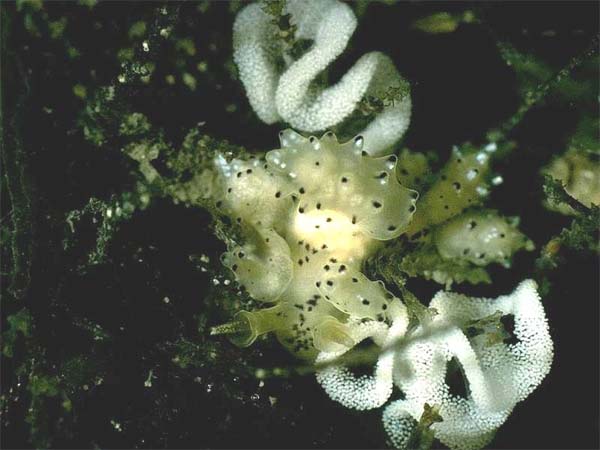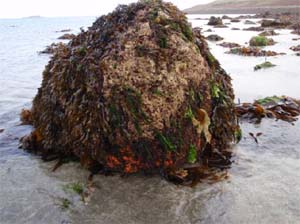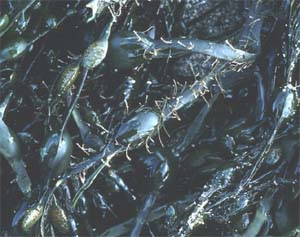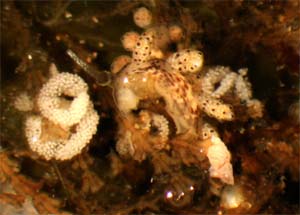
Figure 1: Doto onusta (Photo with kind permission of Bernard Picton)
|
Doto onusta Hesse, 1872 is a little known species, which has usually been considered synonymous with Doto coronata (Picton & Morrow, 1994). It was thought by Lemche to be the species found on the hydroid Dynamena pumila, which grows intertidally attached to the brown algae Fucus serratus and Ascophyllum nodosum, or even under boulders, where there is water movement (wave action or current). The species figured in Picton & Morrow’s book is clearly physically separable from ‘Doto coronata’ agg. D. onusta is translucent white, with black/dark spots on its cerata, whereas D. coronata (agg.) has bright red spots, and a red patch on the inner face of each ceras. More molecular work with this group of nudibranchs is required to fully confirm the status of D. onusta as a species. Until this work is done, however, it is acceptable to record the form with black/dark spots found on Dynamena pumila as D. onusta (B. Picton, pers. comm.). Doto onusta has rarely been recorded, as there are few who would recognise it in the field, or indeed search for it. Most nudibranch enthusiasts are divers, and do not investigate the intertidal! In areas of water movement, at low water, carefully examine Fucus serratus for dense colonies of Dynamena pumila – it’s a relatively ‘chunky’ hydroid, not thin and wispy-looking like Obelia spp. Although the same hydroid is found on Ascophyllum nodosum (see picture below), the colonies are not dense, and the higher position on the shore (much longer period of emersion) would also mitigate against any Doto onusta being found. It is relatively unusual to find such colonies on Fucus serratus, and I was lucky to find a suitable habitat during the Society’s recent field excursion to Skye at The Braes (picture above). When you have found dense colonies of the hydroid, carefully examine them for signs of the curled and folded white spawn laid by Doto spp. There are good images in Picton & Morrow’s book. If you find the spawn, it is almost certain that you will find the nudibranchs that laid them. Examine the area with a x10 lens and you will easily be able to spot the animals. I usually take away a small section of the Fucus serratus with hydroids, spawn and animals tocheck their identification under a microscope in fresh sea water. It is important to do this, as there may a mixture of species of Doto present. For example, the majority of the Doto specimens present at The Braes were Doto coronata (agg.) identified by the red patch on the inside of each ceras, but about 10-20% were D. onusta. Records (all Ireland apart from Skye!): I do not know of any others. The record from Skye is probably the first for Scotland – it has certainly not been known from the west coast of Scotland before this field trip.
Reference: Picton, B.E. & Morrow, C.C. 1994 A Field Guide to the Nudibranchs of the British Isles. Immel Publishing, London |
Figure 2: Habitat for Doto onusta, The Braes, Skye (photo: author)
Figure 3: Dynamena pumila on Ascophyllum nodosum (photo: author)
|



 Figure 4: Doto coronata with spawn, The Braes, Skye (Photo: Peter Topley)
Figure 4: Doto coronata with spawn, The Braes, Skye (Photo: Peter Topley)